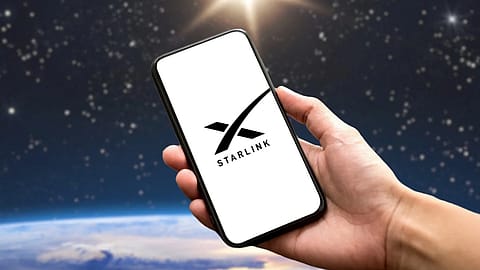Maharashtra is 1st Indian state to partner with Elon Musk's Starlink for satellite internet; key details
Maharashtra has signed a letter of intent with Starlink, becoming the first Indian state to deploy satellite internet services in remote areas. This partnership supports the Digital Maharashtra mission, aiming to improve connectivity in underserved regions.

Maharashtra Chief Minister Devendra Fadnavis-led government has signed a letter of intent (LOI) with Elon Musk's Starlink, making it the first Indian state to partner with Starlink to deploy satellite-based internet services across remote and underserved regions.
Fadnavis stated that the collaboration supports the state's Digital Maharashtra mission, which aims to make the state future-ready. "It was wonderful to welcome Ms. Lauren Dreyer, Vice President, Starlink in Mumbai today, where the Government of Maharashtra signed a Letter of Intent (LOI) with Starlink Satellite Communications Private Limited, marking Maharashtra as the first Indian state to formally collaborate with Starlink to deploy satellite-based internet services for government institutions, rural communities, and critical public infrastructure across remote and underserved regions and aspirational districts in Maharashtra such as Gadchiroli, Nandurbar, Dharashiv, and Washim," said Fadnavis.
Elon Musk's Starlink is one of the largest companies in the ICT industry, holding the largest number of communication satellites in the world. "It is our honour that the company is arriving in India and partnering with Maharashtra. The Maharashtra–Starlink collaboration supports the state’s flagship Digital Maharashtra mission and integrates with its EV, Coastal Development, and Disaster Resilience programs," said the Maharashtra CM.
After receiving DoT's authorisation, space regulator Indian National Space Promotion and Authorisation Centre (IN-SPACe) in June granted authorisation to Elon Musk-led Starlink to offer low Earth orbit (LEO) satellite communication services in India. The authorisation, which is valid for five years, enabled Starlink to enter India's satellite internet market.
Earlier, it was reported that the private satellite communication service provider will launch its internet service at a monthly cost of around ₹3,000. The government sees satellite broadband as a complementary solution aimed primarily at underserved and remote regions, where ground-based infrastructure is limited. Starlink’s direct-to-consumer services will focus on rural areas, while its commercial partnerships with Jio and Airtel will support satellite backhaul and enterprise connectivity.
The government has also clarified that Starlink is not expected to pose any competitive threat to existing telecom operators like BSNL, Reliance Jio, or Bharti Airtel. Additionally, the higher upfront cost of the Starlink terminal, which is expected to range between ₹33,000 and ₹35,000, is further likely to restrict mass adoption, especially in urban markets dominated by affordable terrestrial networks. Further, the ministry has put a cap of 20 lakh (2 million) connections across the country for Starlink, with peak speeds of up to 200 Mbps and expected average speeds around 100 Mbps.
How big is Starlink?
Recommended Stories
Starlink operates the world’s largest satellite constellation, with more than 6,750 satellites currently in orbit, serving millions of active customers around the globe with high-speed, low-latency internet. These satellites, orbiting at 550 kilometres compared to 36,000 kilometres for geostationary satellites, offer low latency (time delay between a request and response measured in milliseconds) globally.
Challenges in the Indian market
Starlink aims to tap into areas that remain unconnected to traditional networks. However, this access won't come cheap. Users in remote areas will need customer premise equipment (CPE), which currently costs around $300. This is a high price for a country like India, where users may not be willing to spend that much money. In addition to this, Starlink will have to bear an 8% license fee. It will also pay an additional spectrum usage charge (SUC), the details of which are yet to be announced.
The tie-up between Starlink, Jio, and Airtel
(INR CR)
As part of the tie-up, both Airtel and Jio will sell Starlink hardware through their stores, offering it as another means for consumers to stay connected. Under the agreement, Starlink gains access to the retail outlets of Jio and Airtel. The telcos will assist Starlink in setting up services for customers via various devices such as the Starlink dish, the router, the Starlink cable, and the AC cable. Airtel plans to utilise this technology to expand services in schools and remote healthcare locations.